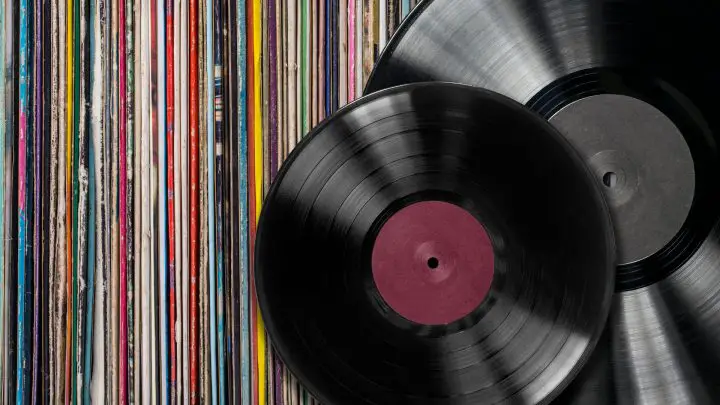In the music industry, achieving double platinum status is a remarkable feat that signifies an album’s tremendous success and cultural impact. It’s a milestone that many artists aspire to reach, but only a select few manage to attain. But what exactly does it mean when an album goes double platinum, and what does it take to reach this coveted milestone?

Table of Contents
- Criteria for Double Platinum Status
- Historical Evolution of Album Sales Certifications
- Notable Double Platinum Albums
- Going Double Platinum
- FAQs
Criteria for Double Platinum Status
To achieve the prestigious double platinum status, an artist’s album must meet specific certification requirements set by the Recording Industry Association of America (RIAA) in the United States or the International Federation of the Phonographic Industry (IFPI) globally. These organizations are responsible for tracking and verifying sales and streaming figures to determine whether an album has reached this coveted milestone.
Certification Requirements
According to the RIAA, for an album to be certified double platinum, it must have sold or earned the equivalent of 2 million units in the United States. This figure includes traditional album sales, track equivalent albums (TEA), and streaming equivalent albums (SEA). TEA equates 10 tracks sold from an album to one album sale, while SEA converts 1,500 on-demand audio and/or video streams to one album sale. The IFPI follows similar criteria for global certifications, taking into account sales and streams from multiple countries.
Sales Numbers
In the past, album sales were the primary metric for determining an album’s success and certification status. However, with the rise of digital downloads and streaming platforms, the RIAA and IFPI have adapted their certification methods to incorporate these new forms of music consumption. Today, an artist can reach double platinum status through a combination of physical album sales, digital downloads, and streaming figures.
Streaming Figures
Streaming has become an increasingly significant factor in album certifications. Platforms like Spotify, Apple Music, and YouTube Music have revolutionized the way people consume music, and their data is now included in the calculation of an album’s total units. To account for the value of streaming, the RIAA and IFPI convert a certain number of streams into the equivalent of one album sale. This allows artists who may not have strong physical or digital sales but have a massive streaming presence to still achieve double platinum status.
Historical Evolution of Album Sales Certifications
Over the years, the music industry has undergone significant changes, and the criteria for album sales certifications have evolved to keep pace with these transformations. The Recording Industry Association of America (RIAA) and Billboard, two of the most influential entities in the music industry, have played pivotal roles in shaping and adapting these certification standards.
Changes in Certification Criteria Over Time
In the early days of the music industry, album sales were the sole metric for determining an album’s success and certification status. However, as technology advanced and new forms of music consumption emerged, the RIAA and Billboard recognized the need to update their certification criteria.
One of the most significant changes came with the rise of digital sales in the early 2000s. As more people began purchasing music online through platforms like iTunes, the RIAA started including digital sales in their certification calculations in 2004. This meant that artists could now achieve platinum status through a combination of physical and digital sales.
Impact of Digital Sales and Streaming
The introduction of digital sales was just the beginning of a major shift in the music industry. With the advent of streaming platforms like Spotify and Apple Music, the way people consumed music changed dramatically. Recognizing this trend, the RIAA once again updated their certification criteria in 2016 to include streaming data.
Under the new system, 1,500 on-demand audio and/or video streams are equivalent to one album sale. This change has had a profound impact on the way albums are certified, as artists with strong streaming numbers can now achieve platinum status even if their traditional sales are relatively low.
Billboard has also adapted to the streaming era by incorporating streaming data into their Billboard 200 album chart. In 2014, they began counting 1,500 streams as one album sale, aligning with the RIAA’s certification criteria.
Notable Double Platinum Albums
Throughout music history, numerous albums have achieved the remarkable feat of reaching double platinum status. These milestone albums not only showcase the incredible talent and creativity of the artists but also serve as testaments to their enduring popularity and impact on the music industry.
Examples of Double Platinum Albums
Some of the most famous double platinum albums include Michael Jackson’s “Thriller,” which has sold over 33 million copies worldwide and remains the best-selling album of all time. Other notable examples include Adele’s “21,” which has sold over 31 million copies, and The Beatles’ “Sgt. Pepper’s Lonely Hearts Club Band,” which has sold over 32 million copies.
In more recent years, artists like Taylor Swift, Drake, and Ed Sheeran have also achieved double platinum status with their albums. Swift’s “1989” and “Reputation,” Drake’s “Views” and “Scorpion,” and Sheeran’s “÷” (Divide) have all surpassed the 2 million sales mark in the United States alone.
Milestone Albums and Impact on Artists’ Careers
For many artists, achieving double platinum status with an album is a defining moment in their careers. These milestone albums not only bring them immense commercial success but also cement their status as music icons.
For example, Nirvana’s “Nevermind” not only achieved double platinum status but also revolutionized the music industry, bringing grunge and alternative rock into the mainstream. Similarly, Lauryn Hill’s “The Miseducation of Lauryn Hill” became a cultural touchstone and established her as a force to be reckoned with in the music world.
Achieving double platinum status can also open up new opportunities for artists, such as headlining tours, collaborations with other high-profile musicians, and even ventures outside of music, like acting or fashion design.
Landmark Albums
Some double platinum albums are considered landmark releases that have left an indelible mark on music history. These albums have not only achieved commercial success but have also influenced countless artists and shaped entire genres.
Pink Floyd’s “The Dark Side of the Moon” is one such album, having sold over 45 million copies worldwide and remaining on the Billboard 200 chart for an astonishing 937 weeks. The album’s innovative sound and philosophical themes have inspired generations of musicians and continue to captivate listeners to this day.
Other landmark double platinum albums include Fleetwood Mac’s “Rumours,” Prince’s “Purple Rain,” and Mariah Carey’s “Music Box.” These albums have stood the test of time and remain beloved by fans and critics alike.
Going Double Platinum
Achieving double platinum status is a remarkable accomplishment that signifies an album’s immense popularity, cultural impact, and commercial success. From the rigorous certification requirements set by the RIAA and IFPI to the ever-evolving landscape of music consumption, reaching this coveted milestone is no easy feat.
For the artists themselves, achieving double platinum status is a testament to their talent, hard work, and enduring popularity. These career-defining moments can open up new opportunities and cement their status as music icons.
As the music industry continues to evolve, the significance of double platinum status remains a benchmark of success. It is a celebration of the artists who have created timeless works of art that resonate with millions of people around the world. These albums serve as a reminder of the power of music to touch our lives, to inspire us, and to bring us together.
In the end, the story of double platinum albums is one of passion, dedication, and the enduring love affair between artists and their fans. It is a story that will continue to be written as long as music remains an integral part of our lives, and as long as there are artists brave enough to pour their hearts and souls into their craft.
FAQs
What does it mean when an album goes double platinum?
When an album is certified double platinum, it means that it has sold or earned the equivalent of 2 million units in the United States. This figure includes traditional album sales, track equivalent albums (TEA), and streaming equivalent albums (SEA).
Can an album go double platinum through streaming alone?
Yes, an album can achieve double platinum status through streaming alone. With the updated certification criteria, artists with strong streaming numbers can reach this milestone even if their traditional sales are relatively low.
How long does it typically take for an album to go double platinum?
The time it takes for an album to go double platinum varies greatly depending on the artist’s popularity and the album’s reception. Some albums, like Adele’s “25,” have reached double platinum status within days of release, while others may take years to achieve this milestone.
Do double platinum albums always signify an artist’s most successful work?
Not necessarily. While achieving double platinum status is undoubtedly a significant accomplishment, an artist’s most successful or critically acclaimed work may not always be their highest-selling album. Factors such as the era of release, promotional efforts, and cultural impact can all influence an album’s long-term success and legacy.
Are double platinum certifications the same worldwide?
While the RIAA certifies albums as double platinum in the United States, certification criteria may vary in other countries. The IFPI, which handles global certifications, takes into account sales and streams from multiple countries when determining an album’s certification status. However, the general concept of double platinum status remains the same, signifying an album’s significant commercial success.





